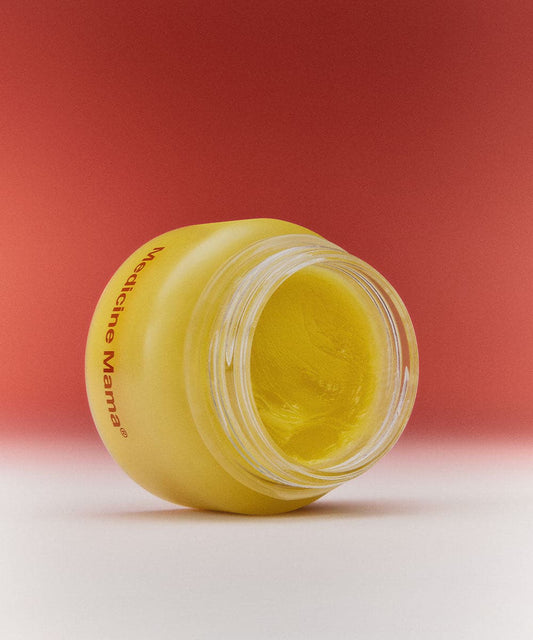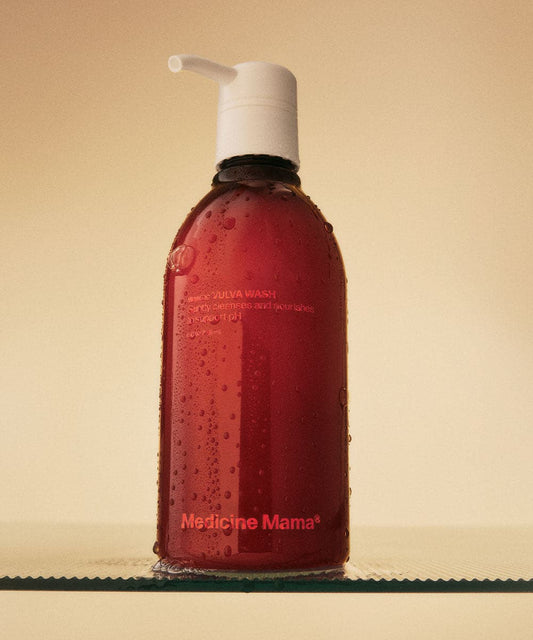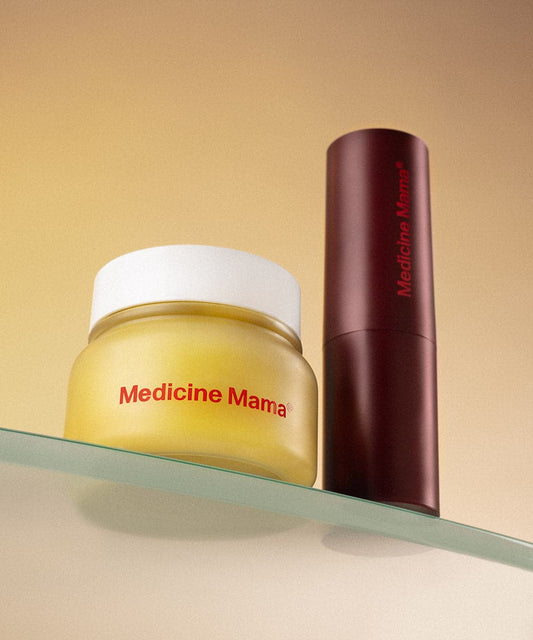Reviewed by | Dr. Clare Bertucio MD
Shaving pubic hair can be more complicated than it seems. Between potential razor burns, nicks, and itchy aftermaths, many things can go wrong even when you do everything right, especially if you’re shaving your pubic hair before a beach day, date night, or other outing where you want your skin to look its best.
Yet, with the right approach, it doesn’t have to be a daunting task. Embracing proper hair removal methods can transform this routine into a safe, even pleasant part of your body care regimen.
Here’s a guide to help you shave your pubic area effectively, leaning into our philosophy of caring deeply for your vulva with the safest, most nurturing products.
What's the Rub With Shaving?
If you thought shaving your legs in a way that leaves you with baby-smooth skin was challenging, you’re in for something else entirely when it comes to removing body hair from your pubic area. Many opt to simply trim pubic hair rather than shave it because the skin in that area of your body can be particularly sensitive and reactive.
Still, if you want to shave, it’s important to have some top-notch shaving tips in your back pocket. Let’s talk about some of the risks you might encounter if you don’t.
Razor Bumps
Razor bumps and ingrown hairs often flare up when hair follicles become clogged with dead skin or the hair grows back into the skin instead of rising above it. This is common when dealing with such sensitive skin.
Irritated Skin
Frequent shaving can also irritate the skin in general, leading to itchy and uncomfortable sensations, making the pubic region feel less than pleasant. There’s also the potential risk of transmitting infections through micro-cuts, which can happen when using a dull razor blade.
Infections
When the genital area's sensitive skin is compromised, bacteria and viruses find an easy gateway, which could lead to more serious health concerns. So, while taking the right steps to ensure your shave is as smooth as possible is important for both vanity and comfort, it’s also worth prioritizing for your overall well-being.
How Do You Prepare To Shave Properly?
Using the right tools when shaving your bikini area, especially your vulva, is essential. A sharp razor ensures a cleaner cut of the hair, reducing the tugging on the skin that can cause irritation and razor burn.
Electric razors can be a good option if you shave regularly, as they minimize skin contact and irritation. If you’re shaving your pubic hair for the first time, starting with a trimmer or even normal scissors can be a key step before shaving down there, especially if you haven’t shaved your pubic region before or in a long while.
It's all about reducing the pull on long hairs. This step is crucial for a closer shave and also prevents the razor from becoming clogged with long hairs, which can lead to repeated shaving over the same area and increase irritation.
Warm water softens the hair and makes the skin more pliable, decreasing the likelihood of nicks and cuts. A loofah or washcloth can be used gently to exfoliate the bikini area before applying shave gel or shaving cream. This exfoliation process is vital because it removes layers of dead skin and frees hair follicles, allowing for a smoother shave with less friction.
Gentle polishes are even better than physical exfoliants like loofahs. They can provide the exfoliating benefits you need to have a positive hair removal experience without irritating the sensitive skin around your vulva.
Step-by-Step Guide to the Shaving Process
1. Lather Up
Begin by applying a thick layer of hydrating shave gel to the pubic area. This gel creates a protective barrier that moisturizes the skin and helps the razor glide smoothly, reducing the risk of razor burn and skin irritation.
The lather acts as a visual guide, showing where you've already shaved to prevent going over the same area multiple times, which is especially helpful for sensitive skin.
2. Hold the Skin Taut
Holding the skin taut is critical, particularly in the bikini line or more contoured parts of the genital region. This ensures the razor blade moves over a smooth surface, minimizing the chance of nicks and cuts. It's a simple technique that enhances safety and effectiveness when working around the curves and folds of the bikini area.
3. Pay Attention to the Direction of Hair Growth
Always shave in the direction of hair growth. Although counterintuitive for those seeking a closer shave, this method substantially decreases the likelihood of ingrown hairs and irritation. For a closer shave without the drawbacks, a second, very light pass can be made cautiously against the grain if your skin isn’t too sensitive.
4. Rinse the Blade
After each stroke, rinse the razor blade under warm water to wash away accumulated hair and lather. A clean blade is crucial for preventing re-shaving over tiny hair remnants, which can lead to irritation. This practice also ensures the sharpness of the blade is effectively utilized, giving a cleaner cut and reducing pulling or tugging sensations on the pubes.
What Do You Do After and Between Shaves?
Maintain Your Tools
Proper maintenance of your shaving tools is vital for ensuring a safe and hygienic shaving experience. After each use, thoroughly clean and dry your razor to ward off rust and bacterial buildup. Store it in a dry area to extend its usability.
Regularly changing the razor blade is also essential! A sharp razor is more effective and safer, as it requires less pressure and reduces the risk of skin trauma. Ideally, you’ll shave your pubic hair immediately after switching to a fresh blade since it’s the most sensitive area of your skin.
Looking After Your Skin
Caring for your skin right after you’ve finished shaving is essential to prevent common issues like razor burn and itchy, irritated skin. The day you shave, it’s best to opt for loose-fitting clothing to avoid friction that might irritate your skin.
Applying a hydrating lotion or vulva moisturizer immediately can also help to soothe the pubic region and lock in moisture, reducing the dryness that often follows shaving. Look for rich organic ingredients that hydrate and form a protective barrier that supports the skin’s natural healing process.
These balms are especially beneficial after hair removal methods, such as waxing or shaving, as they can help to prevent ingrown hairs and moisturize the skin, keeping it smooth and supple.
Know When To Take a Break
Monitoring your skin’s reaction after shaving is key. If symptoms like persistent itchy sensations, razor bumps, or skin irritation do not improve, it might be time to consider giving shaving a rest.
This break can allow your skin to recover and strengthen its natural barrier. During this time, you might explore alternative hair removal methods that are less abrasive to your skin, such as laser hair removal or using a trimmer.
These methods can often be gentler since they reduce the direct friction on the skin and minimize the risk of nicks and cuts. Always consult with a dermatologist before trying new hair removal methods, particularly if you have very sensitive skin or are prone to skin issues in the bikini area.
Skin in the Game
Mastering the art of shaving pubic hair takes patience and the right techniques. From choosing the best tools to knowing how to care for your skin post-shave, every step is crucial.
With our commitment to empowering women through knowledge, you can take control of your pubic hair removal routine with confidence. Say goodbye to that heavy cover-up and hello to your teenie weenie polka dot bikini once again.
Disclaimer: The information provided on this blog is for general informational and educational purposes only. All content, including text, images, graphics, and other material, is not intended to be a substitute for professional medical advice, diagnosis, or treatment.
Always seek the guidance of your physician or other qualified health professional with any questions you may have regarding a medical condition, treatment, or wellness program. Never disregard the advice of a medical professional or delay in seeking it because of something you have read on this website.
Sources:
Tight Pants and Pubic-Hair Removal Increase Risk of Vulvodynia | BU School of Health
To Shave or Not to Shave: An Ob-Gyn’s Guide to Pubic Hair Care | ACOG



